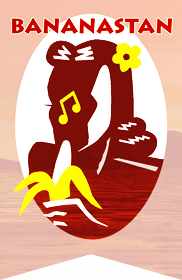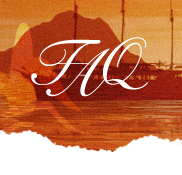FAQ & Facts
Tell me about why you started this label, in a general sense...?
- I wanted to continue recording and had no offers from the deflated record biz. It's sui generis.
Why the format of the split 7"?
- Vinyl singles is where I came in. I want to make that medium a hallmark of my end-game.
I recall the single back ages ago... but they were still not held in the regard the LP was... you took care of your albums... you tossed around your singles! Are you aiming to change that?
- The overriding motive in this collection is to create a tangible objet d'art, reflective of an era of high fidelity wrapped in fine sleeve art.
The above question asked... I have to admit there were always (in the '80s and before) all these very rare 7" records from small reggae acts... some of which you would never hear from again and only ever released as 7" (500 copies!)... that rarity made them special. Do you think of your releases that way? What sort of numbers do you release?
- The physical issue will be modest, aimed toward merchandise support in the limited number of concerts I anticipate on tour.
Do you offer digital versions when people purchase the 7"?
- Downloads for those stuck in the digital ditch will outperform sales of these vinyl products, undeniably. All of that will help hard cost recovery for the musical production. Such recording costs are not much in normal corporatized funding standards, but for a boutique label, quite significant. I'm really hoping to break even, yet feel super that I haven't cut any corners in the musical ensembles.
- In musical and technical terms, I've prepared a menu for a frugal gourmet.
Tell me about how you distribute these records worldwide? What is the market like? Do you make your $$$ back? How do you choose the acts? You mainly look for up-and-coming acts with little material released, correct?
- I'm just now considering what artists to prioritize. The label started with two Calypso re-releases, both of which are without compare in musical and production standards. The Esso Trinidad Tripoli Steelband album, with over two dozen men, is the finest steel band recording I've ever heard. It was nominated for a Grammy [ethnic/traditional]. The Mighty Sparrow's Hot and Sweet was recorded in one day at Criterion Studios, during a hurricane in Miami — on independantly generated power. It's the finest analogue production of Calypso I've heard to date. Both of these albums were done 30 IPS, and the nuanced timbres of both reflect a golden age of recording (circa '71).
- My singles became our next priority, as an adjunct to my performing. (I plan to release these six singles on 12" vinyl, under the album title Songs Cycled. Street date TBA.)
- We then issued (first on 12" vinyl, then CD and download) Van Dyke Parks Arrangements, Volume 1. It includes artists such as Little Feat, Bonnie Raitt, Lowell George, Arlo Guthrie and Ry Cooder. We're now securing rights for Volume 2.
- These albums reflect the 40+ years I've plied my trade in arranging for many fine artists.
- Our next priorities slated include a "Best of" album of New Orleans piano virtuoso Tom McDermott and a Compilation album of Calypso greats, spanning pre- to post- WWII repertory.
How do you choose which bands go with which? Do you want them to be the same sort of music or are you looking to juxtapose different styles?
- I have no restrictive outlines for the label — but a deep interest in a trans-cultural menu. Getting "outside the box", with a world-beat fascination, has been a signature of my musical inquiry since "the '60s".
Tell me about the vinyl — is the quality of the vinyl a concern with 7" records?
- 180 gram vinyl is the finest we found available. We paid for it to get some priceless results.
How about the artwork? Tell me about the process for making the art for each release — the artists, the bands, etc?
- I've always felt the quality of sleeve art took priority over profit incentive. I hope that's evident in each of my albums. I use instinct alone to choose and honor artists I admire. The singles represent this now.
- The label logo (and two singles' covers) was done by (Pulitzer Prize winner) Art Spiegelman. The other artists have all touched my personal life. I consider them friends. They've proven to be just that, as none of them have charged me one red cent. I hope their association with this project reveals their works to new audiences who find visual art can be in flight formation with music.
And thanks... let me know what is upcoming as well.
- Thanks for your incisive questions — and for the dedication you obviously have shown in promoting "high fidelity" (two words increasingly rare in our mass audio environment).
Interview for turntabling.net, November 2011


